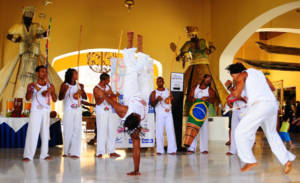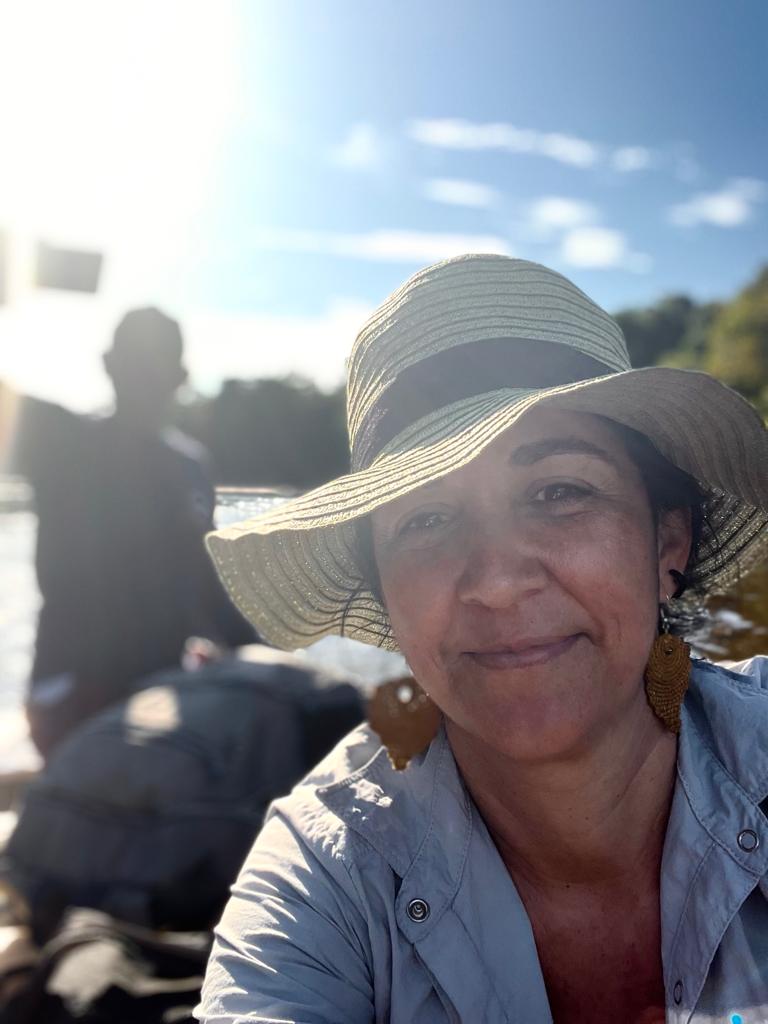
The Amazon is an awe-inspiring and vibrant ecosystem that covers the largest portion of our planet's rainforests. Its breathtaking expanse, teeming with life, remains one of the most ecologically diverse and mesmerizing destinations on the globe. We are thrilled to introduce you to our local partner Vanessa. With her deep knowledge and passion for this incredible region, she is set to be your gateway to a once-in-a-lifetime journey into the heart of this natural wonder and the peoples of the forest.
This exceptional region grants you the opportunity to encounter elusive wildlife, immersing yourself in the enchanting river communities, and basking in the tranquil embrace of pristine beaches. The Lower Rio Negro offers a myriad of captivating activities possible to enjoy in this area on guided excursions in small, motorized boats, a unique experience offering opportunities to explore hidden channels, which may include observing pink dolphins, spotting a variety of bird species, and encountering exotic Amazonian wildlife such as sloths, monkeys, toucans, parrots, macaws and caimans.
– Tucupi: a yellowish broth extracted from the cassava root. It’s used as a base for many Amazonian dishes, particularly in northern Brazil.
– Açaí: a popular Amazonian superfood. They are typically made into a thick purple smoothie and served with toppings like granola, fruits, and honey.
– Brazil Nuts: these nuts are abundant in the Amazon rainforest. They are often enjoyed as snacks, used in baked goods, or made into oils.
– Manioc (Cassava): is a staple in Amazonian cuisine. It’s used to make flour, which is used in various dishes, including the popular “farofa” (a toasted manioc flour side dish) and “tapioca” (a type of flatbread).
– Pupunha: The pupunha palm fruit is commonly used in Amazonian cuisine. It can be prepared in various ways, such as grilling or turning it into a puree for a side dish.
– Fried Plantains: Plantains are often sliced and fried to make a popular side dish. They can be sweet or savory, depending on how they are prepared.
– Tambaqui and Pacu: These are two popular Amazonian fish. They are often grilled, fried, or used in stews.
– Cupuaçu: The cupuaçu fruit is related to cacao and is used to make a creamy, aromatic pulp often used in desserts and beverages.
– Ants and Termites (Upper Rio Negro): Some indigenous communities in the Amazon harvest ants and termites for their protein content. These insects are often toasted and seasoned.
Dry Season (June to November): The dry season is generally considered the best time to visit the Amazon. During this period, there is less rainfall, and the water levels in the rivers are lower. This makes it easier to navigate the rivers and spot wildlife, as animals are often concentrated around the remaining water sources. It’s also a good time for trekking and exploring the rainforest on foot.
Wet Season (December to May): The wet season in the Amazon brings heavy rainfall and higher water levels. While it can be more challenging for hiking and some activities, it’s a great time for birdwatching and experiencing the lush, vibrant green landscape. The flooded forests provide a unique and beautiful perspective of the rainforest. However, keep in mind that some areas may be inaccessible due to the high water levels. Be aware that the Amazon is a vast region, and conditions can vary depending on the exact location within the rainforest, highlands or river. Before planning your trip, it’s advisable to check the local climate and conditions for the specific region you intend to visit. Additionally, it’s important to plan and book your trip well in advance, as some lodges and tour operators can fill up quickly during the peak tourist season.
Viare Travel can connect you with the lodge or experience that best suits your groups’ needs and travel preferences!

She first visited the Amazon rainforest at 19 years old and participated on several photographic expeditions, one of them following a harpy eagle’s nest in the Jauaperi River, where she was totally fascinated by the local people, wildlife and lifestyle. In 2000, she put down her Amazonian roots in the rainforest of Presidente Figueiredo, building the family’s residence and Vanessa focused on her bespoke tourism business.
Vanessa is in her element when she is off-road in a 4×4 Toyota, hiking or on the river, floating slowly through dark, petal-strewn creeks in the flooded forest with indigenous people on Rio Negro. Her life is not without dangers. Still, she believes life is safer in the jungle than in the city these days.
Her work has featured regularly in international television documentaries and magazines. She is also a public speaker who is passionately dedicated to wildlife conservation; community-based tourism; transformational travel; and dealing with the important issue of how travel has the power to protect nature, benefit communities, and preserve cultural heritage—principles she views not only as her goal but our responsibility.
Or if you prefer, email us at info@viare.com.br or call +55 (11) 3042-2515 or +55 (11) 96592-8845 (whatsapp)